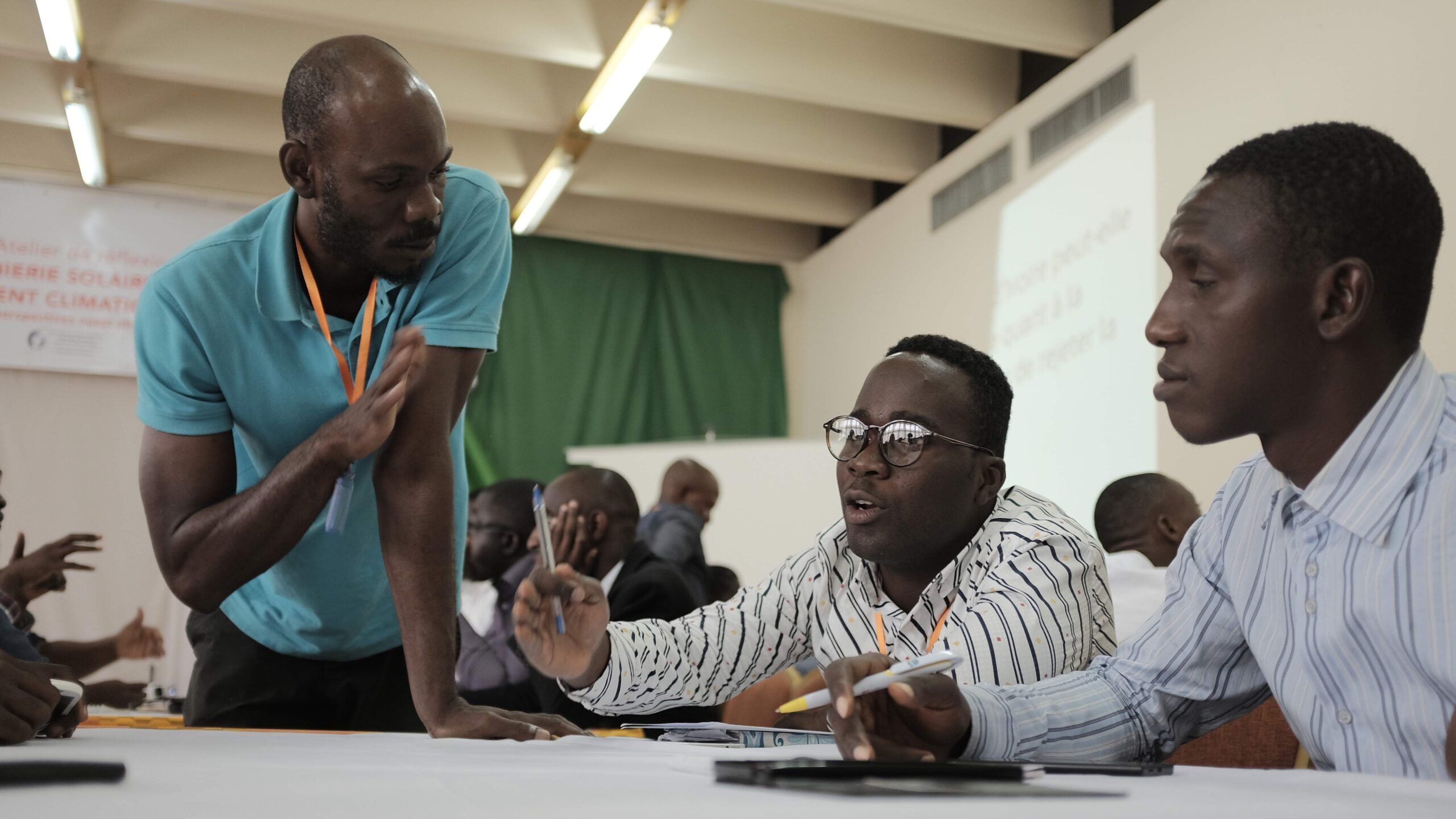Article
SRM Funding Overview
Funding for sunlight reflection methods (SRM), or solar geoengineering, has been rising rapidly in recent years. SRM360’s new analysis provides a comprehensive picture of this evolving funding landscape, showing where the funding is coming from, what it is being spent on, and which countries and philanthropies are leading on this emerging issue.
SRM360 Tool
SRM Funding Tracker
For any newly emerging field, funding matters: both the total amount being spent on its research and development, and who is spending that money and why. Early funding can shape the direction and priorities of a field for years to come.
While SRM funding is still small in relative terms – the historic total spent is less than the cost of a single major movie or video game budget, and considerably less than other climate technologies – it has now reached the tens of millions of dollars per year and is rising. Judging by the growing public discourse around SRM, it is already having a significant effect.
Who is spending that money, on what, and where? We share below six major findings from SRM360’s new Funding Tracker – and explore what they might mean for the future. Note that these figures comprise our best estimates from available information – there may be other activities of which we are unaware, or which are not easy to quantify, and we will continue to improve this dataset over time.
SRM funding has grown since 2020 and is increasingly from philanthropic sources
The relative contributions of governmental and private SRM funding have varied since 2007 with governments providing most funding in the 2010s and philanthropies contributing more since 2020.
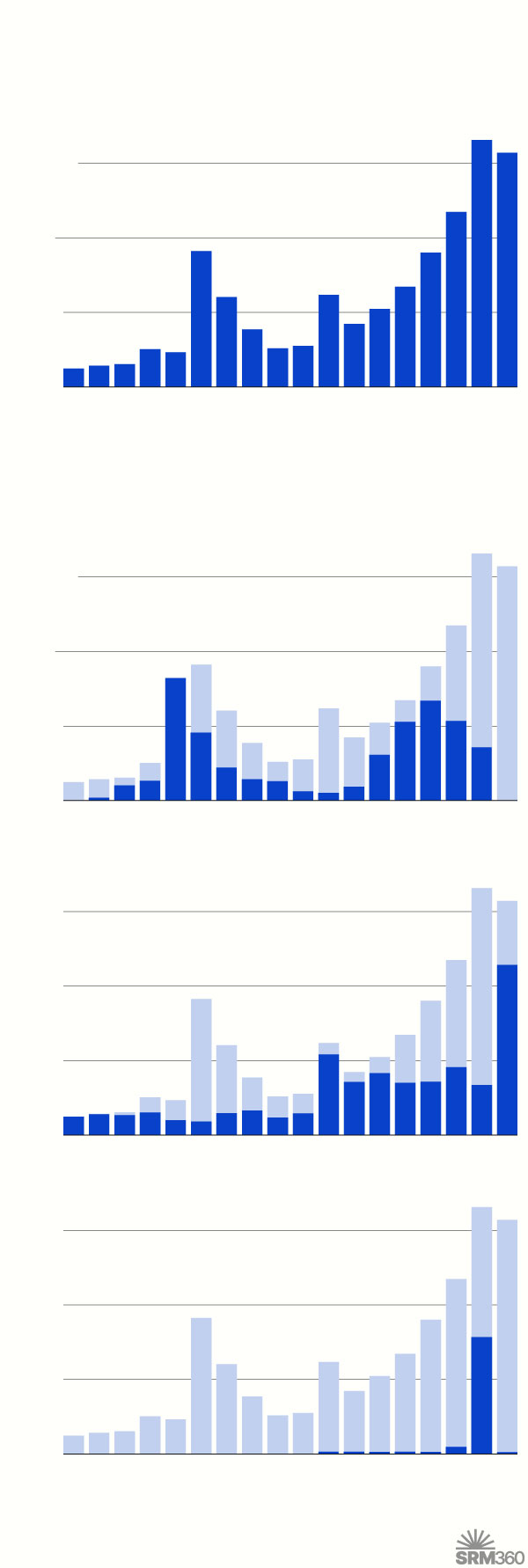
Money entering SRM field annually
$30m
20
10
’07
’24
BY FUNDING SECTOR
Governmental
$30m
20
10
’07
’24
Philanthropic
$30m
20
10
’07
’24
Commercial
$30m
20
10
’07
’24
Source: SRM360.org
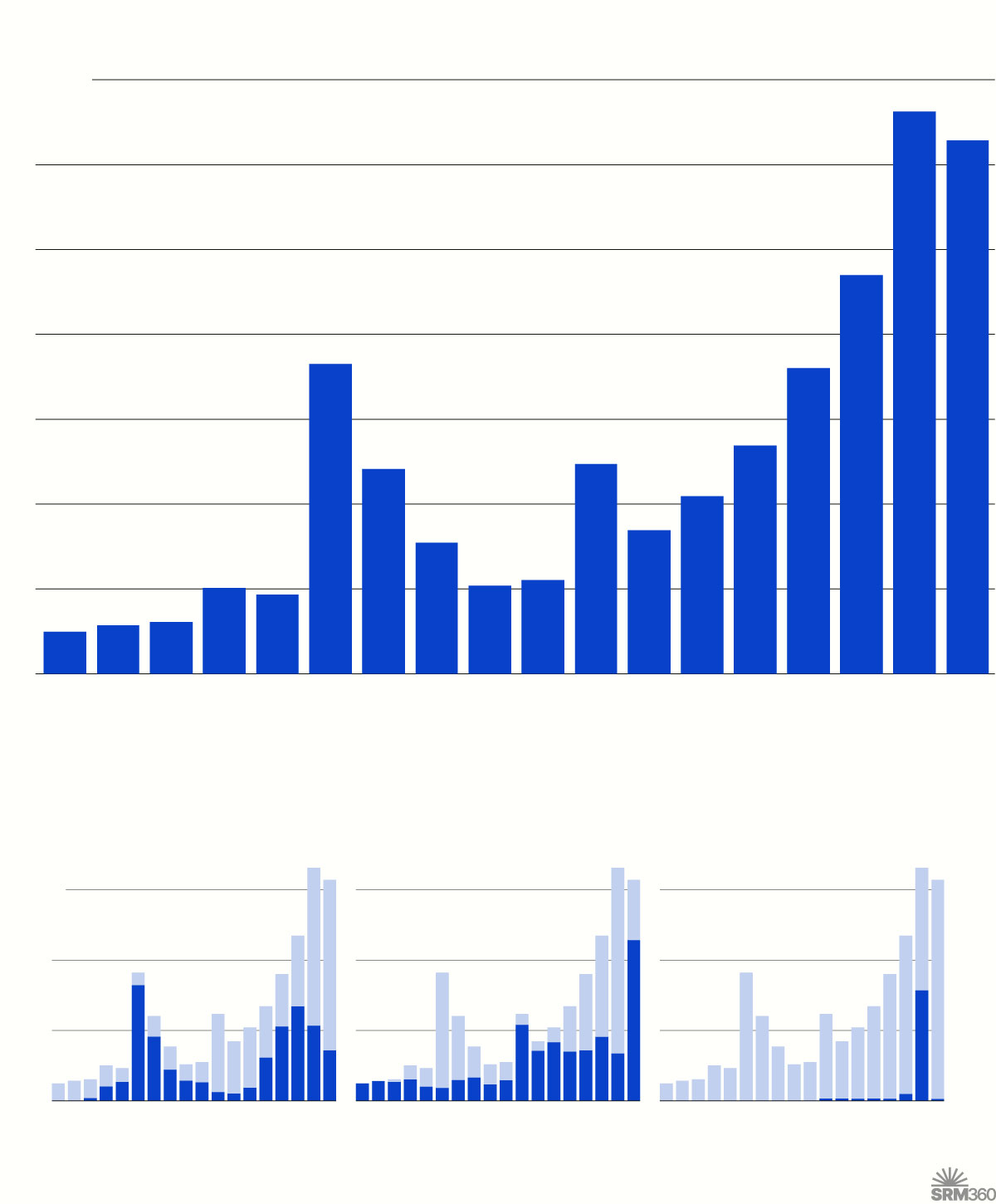
Money entering SRM field annually
$35
million
30
25
20
15
10
5
0
2007
2010
2015
2020
2024
BY FUNDING SECTOR
Governmental
Philanthropic
Commercial
$30m
20
10
’07
’24
’07
’24
’07
’24
Source: SRM360.org
Global funding for SRM has risen sharply in recent years
While still small in relative terms, funding allocated to SRM research and awareness-building has risen considerably over the past 15 years, and it continues to grow.
In the past two years (2023–2024), SRM funding reached the highest levels ever, exceeding $30m each year. The total funding up to 2024 amounted to $191.7m.1 $168.6m of that went to research and awareness-building, and $16.9m went to commercial endeavours.
Funding allocated to SRM was around three times greater in the five years from 2020–2024 ($112.1m) compared to ten years earlier in 2010–2014 ($34.9m). With $164.7m of funding already committed for 2025–2029, it seems likely this upward trend will continue.
This total is still small compared to other fields. For example, it is orders of magnitude less than AI funding or funding for other climate technologies, such as clean power generation or carbon dioxide removal. By way of comparison, investments in clean energy in 2024 amounted to around $2 trillion, or 2% of global GDP, according to the International Energy Agency. SRM funding in 2024 ($31.4m) amounted to less than 0.002% of this total.
But the funding taking place today has an outsized impact. It has a major influence on the methods used to assess SRM, what questions are being asked and in which countries, and the kinds of governance being built around it.
The Global North has received the vast majority of SRM funding to date
SRM-related activities are taking place in more countries in the Global South than the Global North,2 but this masks extreme differences in the amounts of funding received. SRM researchers and organisations in the Global North have received more than 50 times more funding to date, with $188.2m received through 2024, compared to $3.5m in Global South countries.
The leading recipients of SRM funding through 2024 were in the US ($102.8m), Australia ($22.6m), the UK ($17.5m), Israel ($16.1m), and Canada ($12.0m). Recent announcements by the UK’s Advanced Research and Invention Agency (ARIA) put the UK into second place going into the future.
While the Global South receives only a small fraction of total funding, they represent 22 of 34 countries receiving funding to work on SRM. This is in large part thanks to a single NGO, The Degrees Initiative, which provided more than half of the total funding for those countries’ work on this topic.
These trends suggest more attention needs to be paid to support Global South countries’ work on SRM. Solar geoengineering would affect everyone, and climate-vulnerable countries in the Global South have the most to gain or the most to lose.
Just and wise decisions about SRM’s future must involve groups from the Global South who understand the issues involved, and have the expertise needed to steer the conversation.
SRM funding for Global North and South
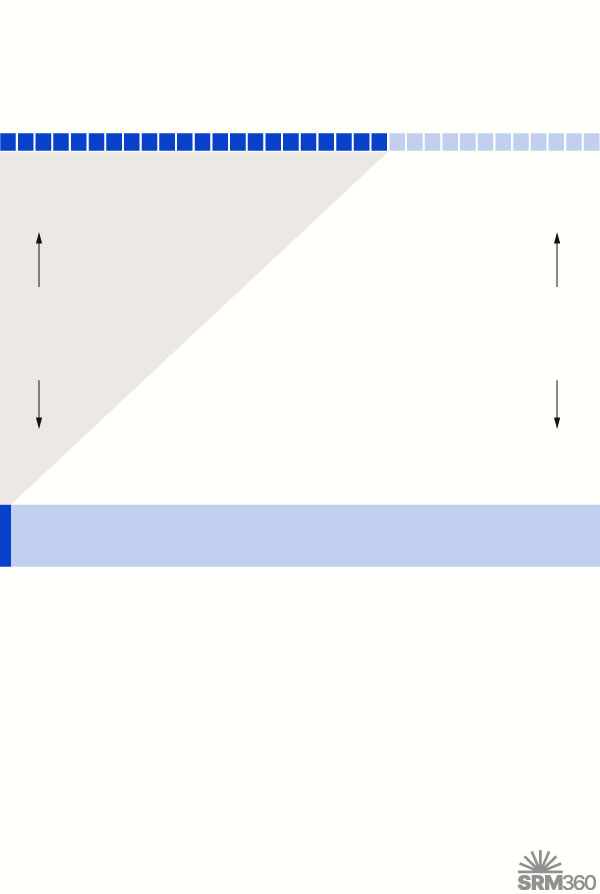
Of the 34 countries that received SRM funding, 22 are in the Global South…
22 countries
12 countries
Global South
Global North
$3.5 million
$188.2 million
But researchers and organisations in those countries have only received about 2% of the overall funding.
Note: Total funding received between 2007 and 2024; includes regranted funds.
Source: SRM360.org
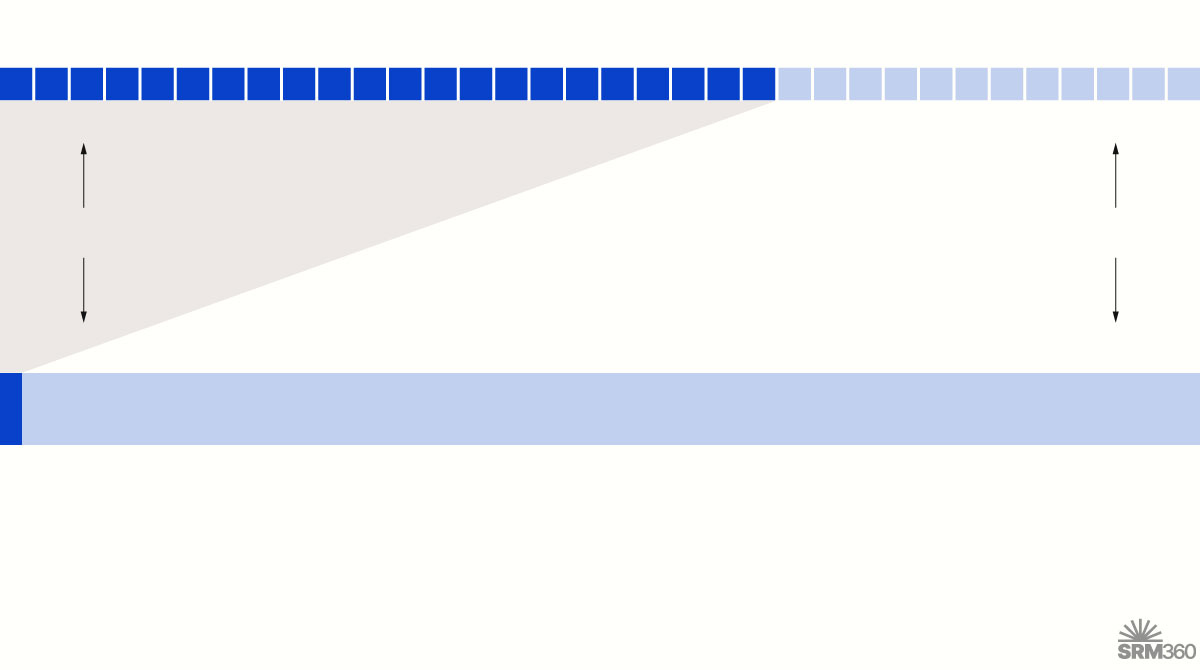
Of the 34 countries that received SRM funding, 22 are in the Global South…
22 countries
12 countries
Global South
Global North
$3.5 million
$188.2 million
But researchers and organisations in those countries have only received about 2% of the overall funding.
Note: Total funding received between 2007 and 2024; includes regranted funds.
Source: SRM360.org
Anglosphere countries have taken a significant lead in SRM funding
The US has been the world’s largest source of SRM-related funding through to 2024, with about $102.2m given from public and private sources. It is followed by Australia ($22.6m), the UK ($17.5m), Israel ($16.1m), and the European Union (EU, $6.7m). Some EU member countries have provided an additional $12.9m.
For funds committed through 2030, the UK will see a considerable increase to $121.1m, making it the world’s second largest funding source, when considering both governmental and philanthropic contributions.
The Anglosphere in general has established a significant lead in this field. Together, funders in the US, UK, Australia, and Canada have spent $145.0m on SRM up until the end of 2024, comprising 76% of all global funding.
This Anglosphere lead is projected to grow substantially when considering future funding commitments, rising to 85%. This is in large part due to recent UK commitments, including that of UK’s ARIA, which will become the largest single source of SRM funding globally. In May 2025, ARIA announced funding awards totalling around $60.0m with additional funding reserved for possible extensions.
By contrast, the EU, China, and India are playing a significantly smaller role.
The European Union has committed only $6.7m to this topic through 2024. Combining this with the additional contributions of individual member states – the Netherlands, Germany, Finland, Sweden, Denmark, France, and Italy – the total funding in the EU rises to $19.6m, only one fifth of the US total.
China has spent only $1.8m on SRM-related work through 2024, a tiny fraction of its approximate $500 billion research and development expenditure. Though Indian organisations receive SRM funding, we did not find evidence that Indian governmental, philanthropic, or commercial organisations were a source of SRM funding.
In an age of increasing geopolitical competition – including for technological dominance – how will different powers respond to this mismatch? Efforts to create multilateral governance over geoengineering have been slow. Without it, countries may see a rising interest in determining who has their hand on a potential global thermostat.
About half of the funding for SRM comes from philanthropic sources
The consequences of studying and potentially developing SRM would affect everyone. To that end, there is considerable interest in who is making decisions about funding, with what motivations, and subject to what oversight mechanisms.
About half of all SRM funding up to 2024 has come from philanthropic sources (around $92.6m, 48%). Governmental funding takes a close second place ($80.2m, 42%). Commercial investment – with for-profit motives – account for considerably less ($17.7m, 9%) but only became a significant contribution in 2023. The remainder (about $1.3m) was from sources we could not confidently identify.
So far, future funding commitments we are aware of do not change that picture significantly, with private philanthropies continuing to account for about half of funding.
This mix has varied over time. There was a surge of governmental funding in 2012 that fell to almost zero by 2017, before jumping up to a steady figure of around $9.5m per year in the early 2020s. Philanthropic funding was consistently below $5m per year up to 2016 but was between $5m per year and $10m per year from 2017 to 2023, and exceeded $20m in 2024.
Philanthropies and governments dominate SRM funding
From 2007 to 2024, philanthropies and governments were the biggest funders of SRM-related activities, but commercial funding is growing.
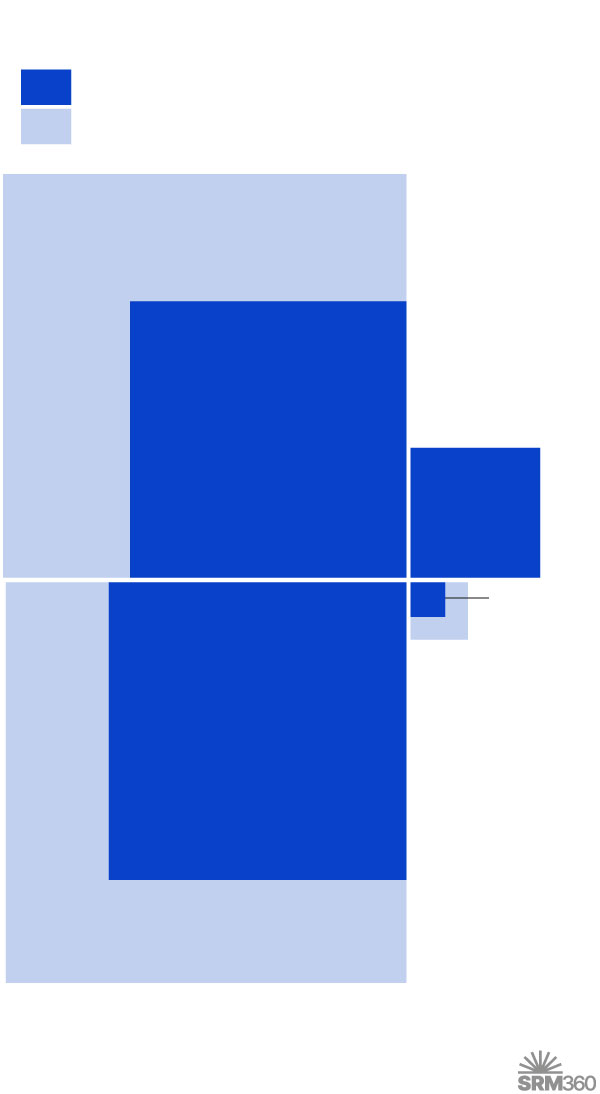
TOTAL FUNDING GRANTED BY SECTOR
Total through 2024
Total committed through 2030
Philanthropic
$167.7m
Commercial
$17.7m
$92.6 million through 2024
$17.7m
$1.3m
$80.2m
Unknown
$3.5m
Governmental
$171.0 million through 2030
Note: Totals include regranted funds.
Source: SRM360.org

TOTAL FUNDING GRANTED BY SECTOR
Total through 2024
Total committed through 2030
Governmental
$171.0 million through 2030
Philanthropic
$167.7m
$80.2 million through 2024
$92.6m
Commercial
$17.7m
Unknown
$3.5m
$17.7m
$1.3m
Note: Totals include regranted funds.
Source: SRM360.org
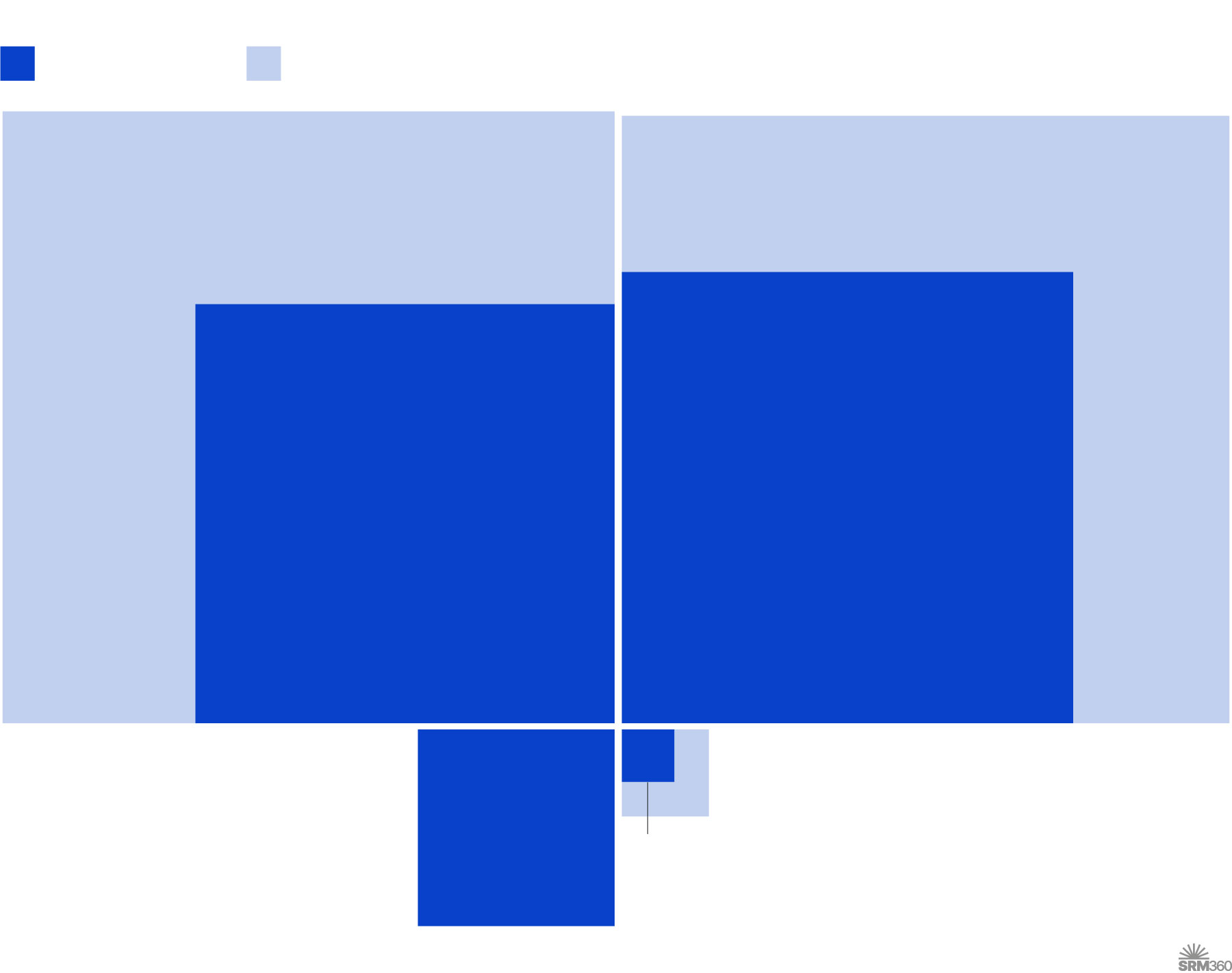
TOTAL FUNDING GRANTED BY SECTOR
Total through 2024
Total committed through 2030
Governmental
$171.0 million through 2030
Philanthropic
$167.7m
$80.2 million through 2024
$92.6m
Commercial
$17.7m
Unknown
$3.5m
$17.7m
$1.3m
Note: Totals include regranted funds.
Source: SRM360.org
The mix of funding also varies by country. In the US and the UK, for example, philanthropic funding has accounted for more than 60% of SRM-related funding through 2024. In the UK, recent investments in SRM with governmental funding are projected to shift this balance away from philanthropies. Australia currently has the second largest amount of SRM funding (after the US) with all of the funding coming from governmental sources.
How this develops remains to be seen. Philanthropic funding often steps into spaces where governments are less able to justify spending to their publics or where funding changes due to political shifts. But philanthropic funding is also subject to changing priorities and can disappear from one year to another.
While there had been limited commercial interest, a recent large infusion of venture capital funding for commercial SRM development ($15.0m) suggests profit-seeking industries are starting to take notice of SRM. It is unclear at this point if this is a one-time investment or the start of a new trend.
Major philanthropies outspend most nations on SRM
The spending by some individual philanthropies significantly outweighs that of most countries.
Based on funding committed through 2030, the UK government will become the single largest source of funding for this topic, having committed $91.3m. The US ($39.0m) will be 3rd largest, and Australia 5th ($22.6m), with the EU ($10.3m, 8th) being the only other governmental source making it into the top 10.
The philanthropic Simons Foundation ($50.0m, 2nd), Quadrature Climate Foundation ($24.2m, 4th), and Open Philanthropy ($14.7m, 7th), as well as Awz Ventures ($15m, 6th), who have invested in the for-profit Stardust Solutions, will each outspend all other nations on this topic.
How can countries with smaller budgets influence and steer work on SRM being funded by private actors? Multilateral governance offers a potential channel to constrain certain actions, but without research investment, will countries have much influence on this emerging debate?
Philanthropists outspend most nations on SRM
Five of the top 10 funders of SRM are philanthropic, outspending almost all nations, with only the UK, US, Australia and the EU making it into the top 10.
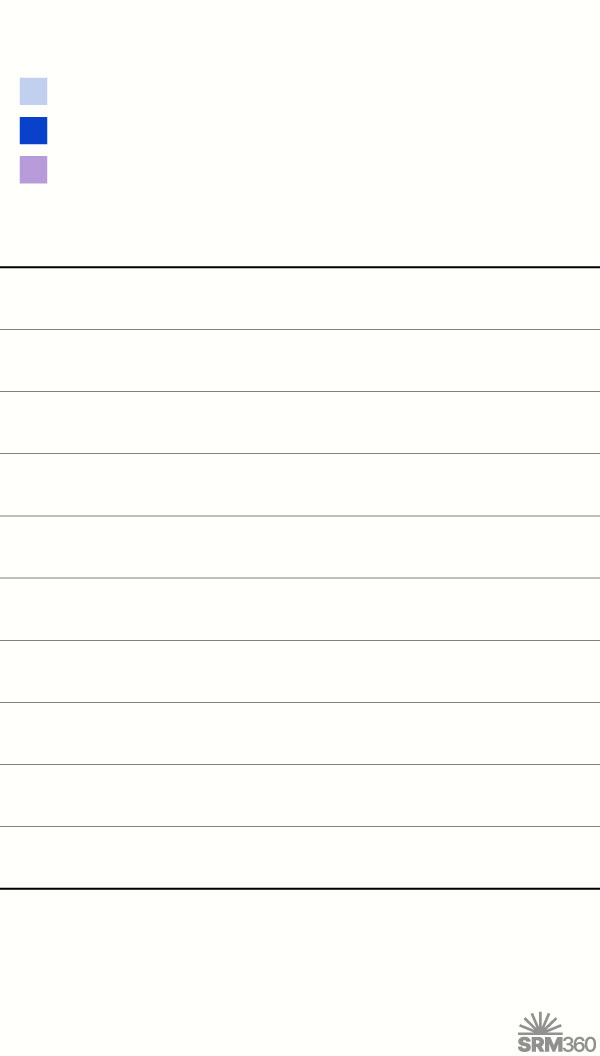
10 LARGEST SRM FUNDERS
GOVERNMENTAL
PHILANTHROPIC
COMMERCIAL
TOTAL GIVEN THROUGH 2030, in millions
ACTOR
1
UK government
US$91.3
2
Simons Foundation
50.0
US government
3
39.0
4
Quadrature Climate Foundation
24.2
Australian government
5
22.6
6
Awz Ventures
15.0
7
Open Philanthropy
14.7
8
European Union
10.3
9
Bill Gates
9.7
V. Kann Rasmussen Foundation
10
7.5
Note: the EU total counts only funding from EU institutions and excludes funding from member states.
Source: SRM360.org
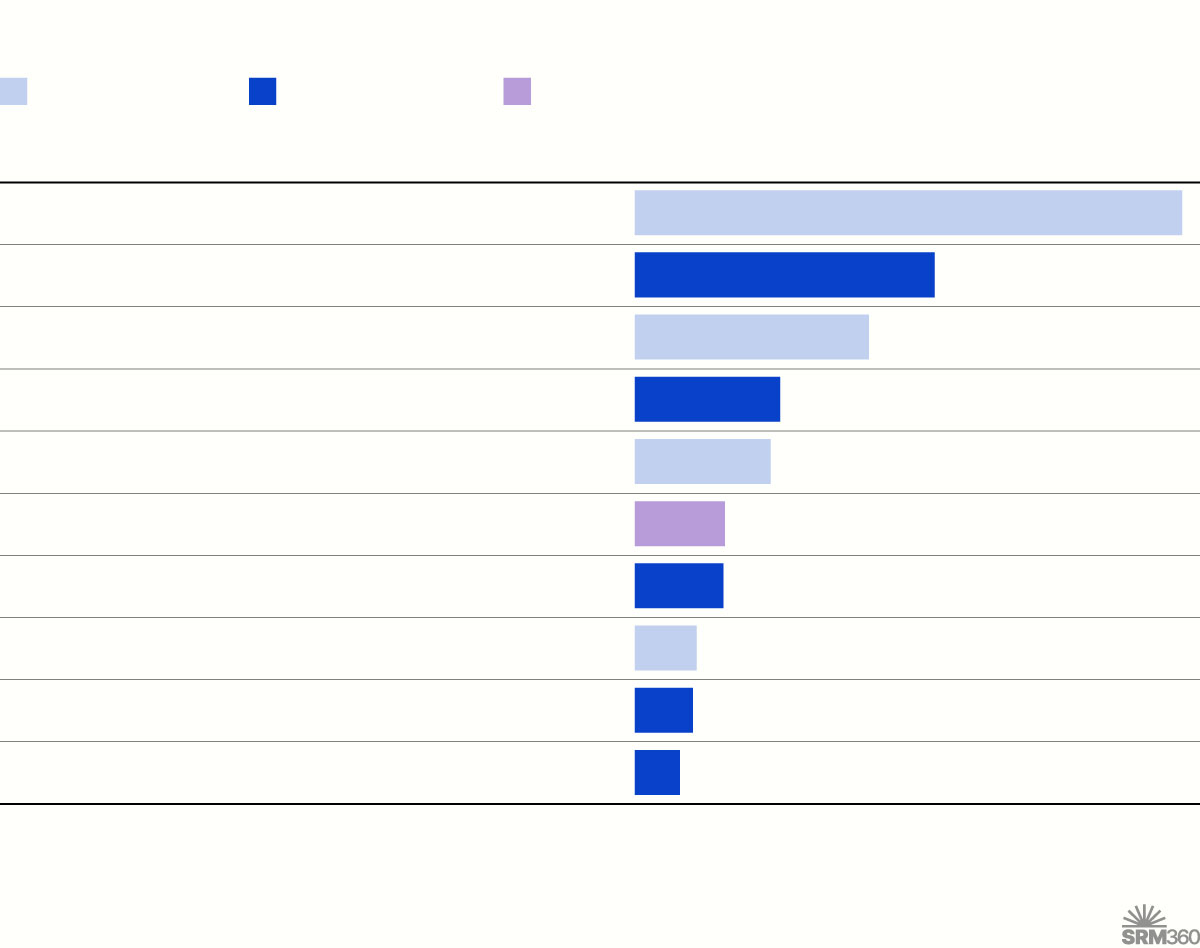
10 LARGEST SRM FUNDERS
GOVERNMENTAL
PHILANTHROPIC
COMMERCIAL
ACTOR
RANK
TOTAL GIVEN THROUGH 2030, in millions
US$91.3
1
UK government
2
Simons Foundation
$50.0
US government
3
$39.0
Quadrature Climate Foundation
4
$24.2
Australian government
5
$22.6
6
Awz Ventures
$15.0
7
Open Philanthropy
$14.7
European Union
8
$10.3
Bill Gates
9
$9.7
10
V. Kann Rasmussen Foundation
$7.5
Note: the EU total counts only funding from EU institutions and excludes funding from member states.
Source: SRM360.org
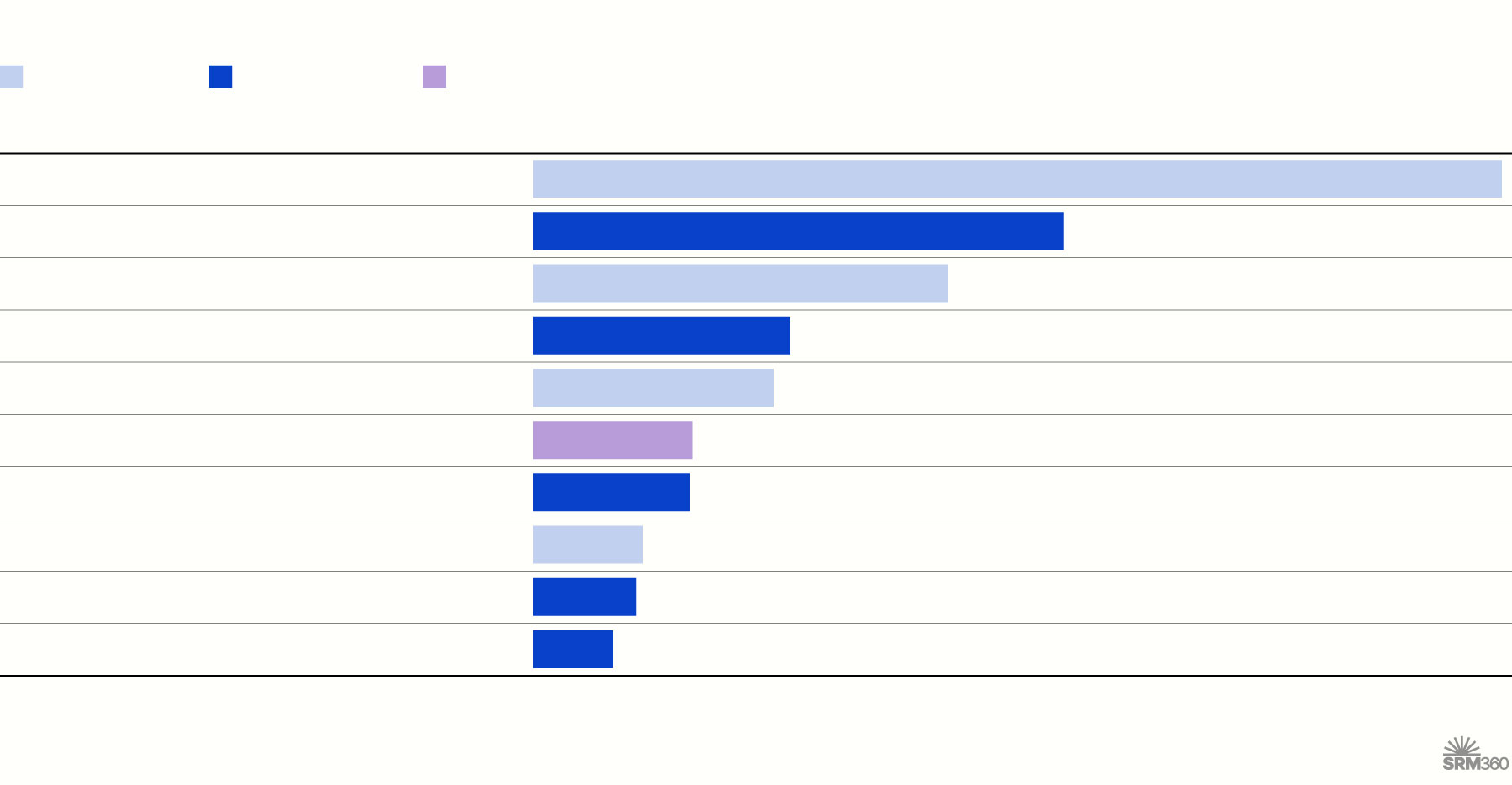
Philanthropists outspend most nations on SRM
Five of the top 10 funders of SRM are philanthropic, outspending almost all nations, with only the UK, US, Australia and the EU making it into the top 10.
10 LARGEST SRM FUNDERS
GOVERNMENTAL
PHILANTHROPIC
COMMERCIAL
ACTOR
RANK
TOTAL GIVEN THROUGH 2030, in millions
US$91.3
1
UK government
2
Simons Foundation
$50.0
US government
3
$39.0
Quadrature Climate Foundation
4
$24.2
Australian government
5
$22.6
6
Awz Ventures
$15.0
7
Open Philanthropy
$14.7
European Union
8
$10.3
Bill Gates
9
$9.7
10
V. Kann Rasmussen Foundation
$7.5
Note: the EU total counts only funding from EU institutions and excludes funding from member states.
Source: SRM360.org
No evidence of private fossil fuel funding, but anonymous sources and incomplete data raise questions
One major critique of SRM research and development is that fossil fuel interests could use the promise of SRM as an excuse to avoid decarbonisation. This is a significant and valid concern, although so far it does not appear to be happening in practice.
We have not found evidence that private fossil fuel interests are funding or promoting SRM, and many recipients of SRM funding explicitly state that they will not accept funding from fossil fuel sources.
However – and this is an important caveat – several organisations did not respond to requests for details about their funding sources and we identified at least $1.1m of anonymous donations in the field.
This creates a gap in our understanding. Many organisations – including SRM360 – promote transparency as a critical part of SRM governance, yet some struggle specifically with transparency over funding.
This raises difficult questions. Publics will rightfully ask: who are these sources, and why are they funding this? SRM360 will continue to work on this challenge, exploring new ways to create as much transparency as possible in a fraught and contested field.
You can find details of the methods behind this analysis here, and you can download some of the data that our analysis is based on here.
Endnotes
- Our records begin in 2007, which can be seen as the starting point of significant funding for SRM. These figures report funding allocated over time, meaning that only a third of a 3-year grant starting in 2024 would be counted towards total funding up to 2024. Note that all figures are not adjusted for inflation; full methodological details can be found here.
- Global North and Global South countries are defined according this list from the United Nations.



